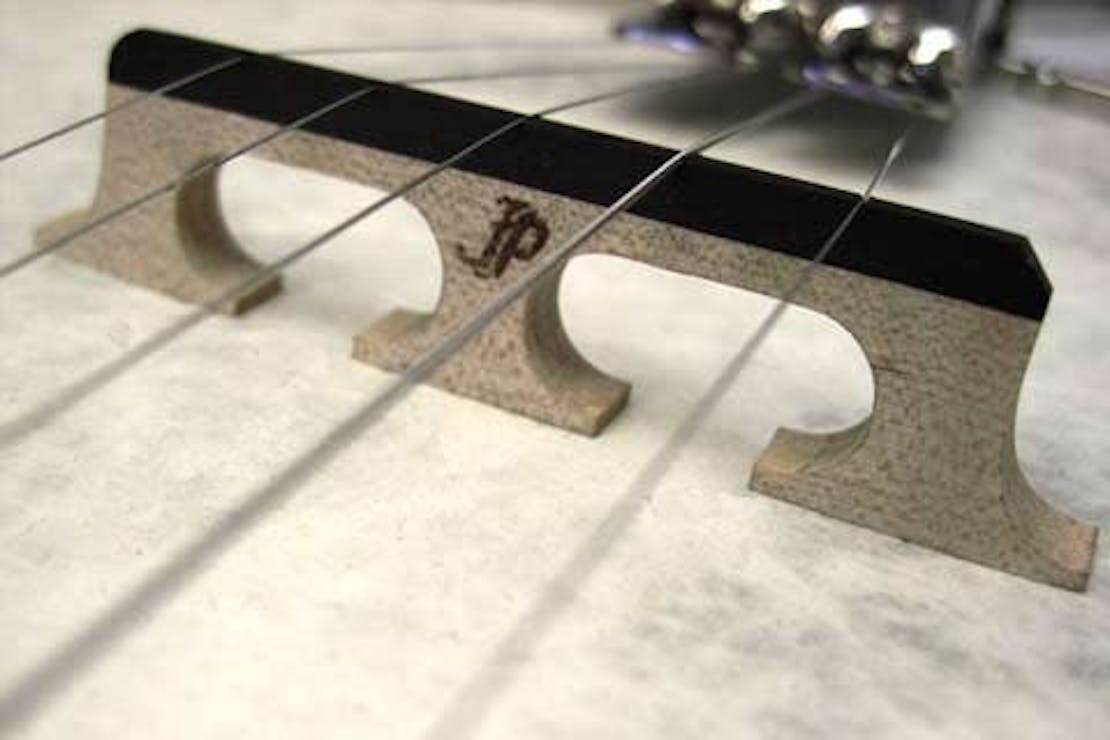
The banjo bridge and its function
The banjo bridge does exactly as its name suggests, it forms a bridge for the strings to pass over the banjo head and transmits sound from your strings into the banjo head. Bridges are available in different heights and they are measured in imperial measurement. The most popular three heights being 1/2”, 5/8” and 11/16”The most popular bridges are made from AAA grade maple with an ebony top. Some bridges have inserts made from bone or plastic to help give a brighter tone.
Tone, Volume and Action
Changing your bridge will alter and affect the tone and volume of your banjo, it may also alter the ‘action’ of your banjo! (The ‘action’ is the distance that your strings are from the frets of your instrument. Your strings will be easier to press down when you have a ‘low’ action. However, the ‘action’ should not be set so low that you get ‘fret buzz’).
In general the simple rule is: Low Bridge = Low Volume High bridge = More Volume. 5/8” is the optimum and most popular bridge height.
Note: Some novice players think that the height of the bridge is for setting the ‘action’ of their banjo, this is not the case! The action is set by adjusting the ‘neck angle’ on a banjo.
However, in some cases where the banjo neck angle cannot be adjusted that only way to change the action of the banjo is to alter the height of the bridge.
Banjo Intonation
The intonation of your banjo is affected by the position of your bridge. The rule is that the bridge is positioned on the banjo head twice the distance of the measurement from the inside of the nut to the 12th fret. On a 5-string banjo the bridge is generally positioned square, but on tenor and plectrum banjos it helps intonation to set the bridge at a slight angle giving the heavier gauge fourth string a greater distance than the thinner plain first string. The bridge should sit flat and square making full contact with the banjo head.
Shape of Banjo Bridges
You can buy ‘Off the shelf’ compensated 5 string bridges, some of which compensate the length of all the five strings and others that only compensate the length of the third string.
Modifications to the shape of a bridge can alter the sound of your banjo eg. if you ‘thin’ your bridge by sanding it, this will give your bridge lesser contact with your banjo head and the result will be a brighter ‘snappier’ tone, many plectrum banjo and uke banjo players do this.
Unwanted harmonics and overtones can ‘sometimes’ be suppressed by sanding the bridge thinner towards the treble end.
